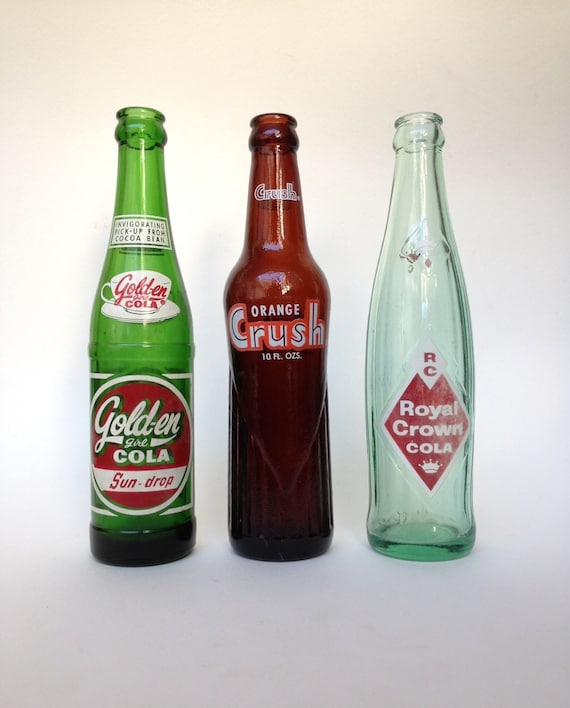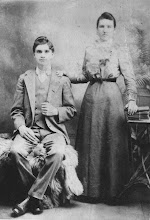The first store was across the street from this store and it was shaped more like a barn. It was one and a half stories tall and the feed was stored in the back of the store. Beside the store was a coal bin where people could buy coal for their stoves to either cook on or heat their house with. We sold coal by the ton and we delivered it to our customers homes.
The coal would be unloaded into our coal bin that looked something like this. We had a large shovel that you would scoop up the coal and load it onto the pickup or into coal buckets if customers wanted a smaller amount.
We also sold inside the store coal buckets for our customers to use at home to bring in their coal for their stoves.
We sold several styles of coal and wood stoves. Below you can see some of the stoves and heaters that we sold. I remember going to Atlanta with my dad and we would go to Atlanta Stove Works and buy these stoves as well as Cast Iron Cookware, fireplace grates, stove pipes, stove vents, stove mats and metal swings and cast iron outdoor sets.
This is a two-eye coal stove with a clean out trap door on the front and the door could be opened to vent it so it would burn hotter. The saying was so true with these stoves, "You could stand close and burn up on one side and freeze on the other side." You always kept a kettle of water on the stove to keep humidity in the room. To load the stove with coal you used the eye lifter and set the eye cover to one side and dropped the coal into the top of the stove.
We sold a few of this stove for people who wanted to heat their living room or parlor. It had polished steel and bronze plating. It would heat several rooms but it could run you out of the room it was setting in if you got it too hot.
This one was called the Lowboy Pot Belly Stove or heater. They also made one that was taller and it was called the Highboy Pot Belly Stove. The difference was that the Low Boy was used in homes and the Highboy was used mostly in businesses. We had a Highboy like this in the back of the store shown above.
If you wanted to have your own coal bin we sold this model for home storage. It was very heavy, because it was made out of cast iron.
This was a popular model stove, it had a door on the side to load the wood in. It also had four eyes on top for cooking on. It had a warming shelf in the front of the stove to keep the biscuits warm. Some models of this stove had a water reservoir to keep hot water available for the home.
This was what we stored our Kerosene in and we would fill the customers jug or jar with. We would use the hand crank to dial up the amount that we needed and then pump it into the container. Kerosene was used for people that didn't have electric lights and still used kerosene lamps. It was also used in kerosene heaters like the one shown below.
These kerosene heaters were light and easy to take from one room to another, and they would put out some light into the room as well. Most of the ones that we sold were black, but you could buy them in white or red like the one above. They had an odor of kerosene but they were useful for the home.
You may have had one of these around the house that you kept cole oil in or gas or kerosene. It made it easier to store it and you always new what you had stored in it, we sold these as well.
Or maybe you purchased these five gallon glass jugs for you water, kerosene or maybe you sold moonshine and needed a very large jug.
We sold #2, #4, and oval aluminum tubs. We sold twin tubs for washing your clothes in. One tub was for washing and the other tub was for rinsing. You either used a rub board to scrub your clothes in or you would use a wringer washer or tub ringer to wash your clothes.
This one is a fifteen gallon tub that you would use when you harvested vegetables such as corn out in the field or fruits like apples or peaches.
This is an eight gallon tub or #2 for washing dishes in the kitchen if you didn't have a sink. Or for storing cold water in from the well.
We sold this size pail for gathering small vegetables from the garden or using it to draw water from the well. Or for scrubbing the floors. It had many uses because it was smaller and easy to carry.
This is called an oval wash tub or bath tub. We sold a many of these and I'm sure many people used them for bathing in. I knew a woman who used it as a boat to fish in, I had heard that she used one and I didn't believe it until I saw it with my own two eyes.
This is a picture of the double wash tub that I mentioned earlier. One side was used for washing clothes and the other side was used for rinsing them. You could probably wash two kids at the same time if you had a mind to. Or maybe you used the wooden tub or metal tub with a rub board and a ringer. Both worked great but watch you knuckles on that slippery rub board.
This tub was used to store things in like canning jars or wood for the stove. Or to bring in the vegetables from the garden. What did your parents or grand parents use theirs for?
We sold Crosley Wringer Washers as well as Norge. You would fill up the washer and add washing (warshing) powder and wash your clothes. You would then run them through the ringers to get out the excess water and dirt, empty the wash water and refill with fresh water to rinse and then re-ring and then hang them on your clothes line. Did you ever get your fingers or hands caught in the wringers? We had a lady that would wash our clothes and I can still remember to this day her singing, "Standing On The Promises," and moving her body to the movement of the agitator of the washer as she sang.
I remember my mother teaching us to hang our outer clothes on the outside line and our under garments on the inside line so that when people were driving down the road they didn't see the under garments. The bedding smelled so fresh after hanging on the line. If the weather was cold you used and indoor folding clothes line so that your clothes didn't freeze.
We sold a many of these clothes lines, they would fold up and you could slide them in a closet or under the bed. But watch out for your fingers, If you got into to big of a hurry folding it up it would pinch your fingers and form a blood blister.
Here is another item that we sold to the lady of the house. It was a kitchen pantry or cabinet that kept many thing together in the kitchen. You could store your dishes, silverware, bread, pots and pans and boxed baking goods. Some like the one above had a flour bin in ones side with a sifter handle that would sift the flour to keep it from packing up if it got some moisture in it. We sold them in white with red trip, white with black trim, Yellow with white trim and green with white trim. Some of the cabinets had porcelain over metal counters and if you hit it with you cast iron cookware it would flake off.
We also sold dinettes that would match your kitchen colors. When we first started to sell the metal sets they would come in chrome legs on the table and chairs and the edge of the table top. The tables and chairs were in two-tone colors.
This was a popular color, red and white. This set when purchased you got a free canister set with it.
Maybe you like turquoise and white better.
Maybe you had a larger family and needed a table for eight and you liked yellow and white.
Here are some of the model wood stoves that we sold at P.Y. Waters Grocery. Some of them were the console models and others had the high back with biscuit warmers at the top. They all had a fire box for the wood or coal, and oven, a water reservoir, four eyes to cook on.
Later on when our customers got electricity they started to want electric and gas stoves to cook on. You could buy a stove in a 24 inch, 30 inch or in a 36 inch. The 24 inch stove was called an apartment range for smaller kitchens. The 30 inch range was for normal families and it had a storage draw and oven and four eyes to cook on. The 36 inch oven had elements on one side and work space on the opposite side. It had a large drawer on the bottom for storage as well as the on on the side.





How many remember the red and white, blue and white or all blue, porcelain pots and pans? Here you will see a picture of some of them and maybe you will remember seeing some around your home in the 50's. I wish I had a dollar for every pot or pan that we sold then. Maybe you remember one being in the bedroom!!
They were there because sometimes the ladies didn't want to go outside to the outhouse, and they used a pot that was kept under the bed and emptied in of a morning.

Did you ever use a dipper when you had drawn up the fresh bucket of water from the well and you were either going to take a drink of water or maybe get ready to bathe.
Maybe you purchased some cast iron skillets or pots for your home. They came in all sizes and food never has tasted any better. It had to be seasoned with lard to keep it from rusting after you washed it. I remember some ladies saying that they never washed theirs, they just wiped it out and that kept it seasoned. I still like my cornbread made in a cast iron skillet.
The housewife wanted to have a sink in her house so we bough Morristown/Youngstown sink and cabinet combinations. You could buy a single sink for your kitchen and either have a left hand sink and a right hand drainer or a right hand sink with a left hand dish drainer. Or you could go all out if you had the room and get a double bowl sink with two drain boards. This was a great improvement in the ladies kitchen and it kept many thing closer at hand for quick use.
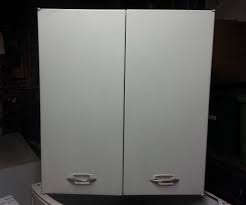


These companies later came out with metal kitchen cabinets for the complete kitchen, giving the housewife a complete kitchen with plenty of storage.
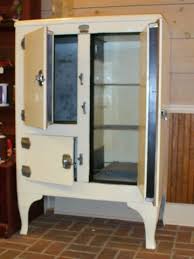

Iceboxes before electricity

When electricity came into the homes in the 40's and 50's we started to sell electric refrigerators. Before that we had sold ones that were a wood cabinet with a metal lined top box for a block of ice that you purchased from the ice plant. This would keep for several days and keep your food cold. I knew some of our customers that had creeks on their property and they would have a well house built over the creek and the cool water would pass over their milk and butter and other items kept in the well house to keep the food cold.
As I write this is seems like it was just a few years ago that I was a child in this store. Some of the memories had had suppressed in my memory and as I do this post those memories come flooding back to my mind like they were yesterday. It is hard to believe and see the changes that have happened over fifty plus years.
Colonial Is Good Bread
When you came to Mrs. P.Y. Waters Grocery, you would see this image on the screens of the Screen door on the front of the store. We sold Colonial Bread in the store as well as their bought cakes and snacks. Every year they would replace the screens or the screen door if it was needed. It was a reminder to not forget to purchase your bread.
If you came in and cot a cola and a snack and you put it on your charge, I remember Uncle Snooks, Aunt Bill or Aunt Hattie writing it down on a charge pad. They would write: soda and grazing and the amount.

This is a copy of the bushel basket

This is what a 1/2 or 1 peck basket looked like

We also sold this style of basket for storage items in the home
We used the front windows to show off our produce that was fresh either from the Farmers Market in Atlanta or from the local farmers. We had some green pull down shades over the windows to cover the produce from the sun. We kept some of the produce in peck and bushel baskets and you could buy the whole basket if you so desired.
Just inside the front door was a ceiling fan that kept the store cool on warm summer days and discouraged flies from flying in. At the counter was Aunt Bill waiting to greet the customer when they came in, ready to take their order. Just to her right was an ice creme box that had pop cycles, fudge bars, nutty butty, push up orange sherberts, dream cycles, or small containers of ice cream.
Just beside it was a chair that Aunt Bill set in when there wasn't a customer in the store. Just beyond the chair on the left side was the Colonial Bread rack or Wonder Bread and Sunbeam Bread. The top had cakes and sweet rolls and fruit pies and during the holidays there was fruitcake. The middle row was for bread, and the bottom row was for boxed cereal.
When we first got Wonder bread I remember the Bread Man bringing us some balloons in Dark Blue, Red and Yellow that we would give away to the kids when they purchased Wonder Bread.
Our candy rack wasn't this grand but it would make you think of what it looked like. I remember that we got ten cents for our allowance. You could buy a small sack of candy for 5 cents. and you could buy a 6 ounce Coke Cola for five cents. The penny candy was two pieced for one cent. This would be BB Bats, Kit Kats, Mary Janes, Chocolate Footballs, Red Hots, Coconut Logs, peanut butter planks, Bazooka Bubble Gum. We also had candy bars that were five cents and they were: Baby Ruth, Zero, Butterfinger, Mars, Snicker, Neco Wafers, Goo Goo, Chocolate Raisins, Lemon drops, baked beans, Tootsie Roll, Zagernut to name a few.
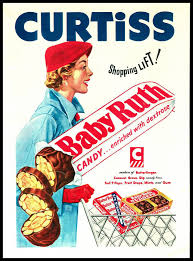
Next to the candy counter was a pass through to the other side of the store to the furniture side on the left or more grocery shelves on the right. The middle aisle has canned vegetables, canned fruits, facing the bread rack. On the opposite side down the other aisle were household items like pans, dish racks, small rugs, anything for the house. The aisle across from that on the front had bolts of cloth, a thread case for sewing thread, crochet needles, a button rack, zippers, rick rack, ladies belts. Then you had an opening to the aisle on the wall that had near the back things for the home like hardware items. Nails, Hammers, shovels, rakes, faucets, washers bolts and screws. We had a section for soap, detergent, (warshing powders).
Do you remembered that it would float?
Cards of Buttons
We sold Trettle Sewing Machines as well as parts for them.
School Supplies, pencils, paper, pencil holders, erasers
Bolts of cloth for clothes made at home or pieced together for homemade quilts.
Cards of Needles
Cards of buttons.
Flour and Corn meal in cotton sacks
Customers would bleach out these sacks and make clothes out of the sacks. The top picture shows the sacks after they have been bleached out.
We sold cotton thread on wooden spools and they were stored in the case
above to keep them clean. Notice that the case say's (Fast Colors - Will
Boil)
We had zippers in plastic boxes
And later they put them in packages
We had a section on an aisle for flour, sugar, corn meal, salt, pepper, condiments and peanuts and pecans.
Next to the bread display rack was my favorite part of the store, the candy case. It was a wooden case made out of oak and it had glass shelves and glass front and sides. Extra boxes of candy were stored in the bottom of the cabinet except in the summer time then they were stored in a refrigerator on the furniture side of the store.
Across from the candy case was a counter where Uncle Snooks sat and he was the Bookkeeper for the store. He kept up with customers paying their bills as well as adding charges to their accounts in his ledgers.
Beside his area was a counter where the orders were filled for grocery delivery to and for our customers. Aunt Hattie would call out the items that were needed for the order and whose ever was working at that time went and got the items and she or Aunt Bill(Willie Mae) would make sure it got into the correct box or sack.
Engineer Overalls
Underneath this counter were work shoes and overalls for sale as well as Dickie work pants. We carried the dark blue overalls as well as the Engineer overalls. The Engineer overalls were blue and white stripped and they were usually worn on Sunday's with a white shirt.
Behind this was the drink case, that held about 100 drinks. The closer the drinks were to the compressor the more slush of ice they had in them. This was a welcome taste on a hot summer day. We sold Coca Cola, Pepsi Cola, Dr. Pepper, Squirt, 7 Up, Orange Crush, R.C.Cola and Cheer Wine. It had for slider covers on the top to have easy access to the drinks and two places on the front for the bottle lids after you opened them.
You could buy the drinks by the case(24) or by the carton (6) or individually(1)
This is what the case looked like with the 6 ounce bottle
The bottle on the left is a 6 ounce Coca Cola Bottle, The middle bottle is a Dr. Pepper bottle(notice the 10, 2 and 4 on the bottle. It was said that it was great for the stomach. And the last bottle is a Cheer Wine Bottle.
Wire storage rack for the cases of drinks.
A sign showing a carton of cokes.
Golden Cola, Orange Crush and R.C. Cola
Royal Crown Cola (R.C. Cola)
Hoop Cheese came in these wooden containers to help them stay fresh
Milk came in these bottles with a tin lid on the top to seal the milk
We had next to the Drink Case a Meet and Dairy Case that we sold eggs and cheese and milk and butter. Some of these items came fresh from the farm or we purchased others of the same products from a distributor out of Athens. By the back door we had a mail box for General Delivery mail for people in the area to get their mail.
We sold gas to our customers, we originally had only one gas pump. You would dial up the amount needed for the customer and it would go into the globe on top of the pump and when you put it into the car it would drain out of the tank on top. When they went to regular gas and high test gas we had two pumps and they were Standard Oil pumps.
We started selling outdoor lawn furniture just before we purchased the building on Central Ave. And then the name changed to Waters Bros. Inc. where we sold furniture and appliances only and the Mrs. P. Y. Grocery sold only groceries until it closed in the late 60's.
In the center of the back of the store was the Big Highboy coal and wood stove that kept the store warm in the late fall and winter months.
This grocery was like any Mercantile or General Store that you would find in the 40's, 50's and 60's in the Rural South.
We had good ole Southern hospitality and great service. We offered credit to our customers and free delivery of your groceries.
I never knew my grandmother to work here but her name was on the store. My grandfather died in February of 1937 and Uncle Snooks and my Dad took over the store to keep income coming in for their large family. Later on my Uncle Dan and Uncle Bob and their children worked in the store doing what ever needed to be done.
I am thankful for these memories and when I have talked of my childhood growing up some people find it hard to believe.




















































































